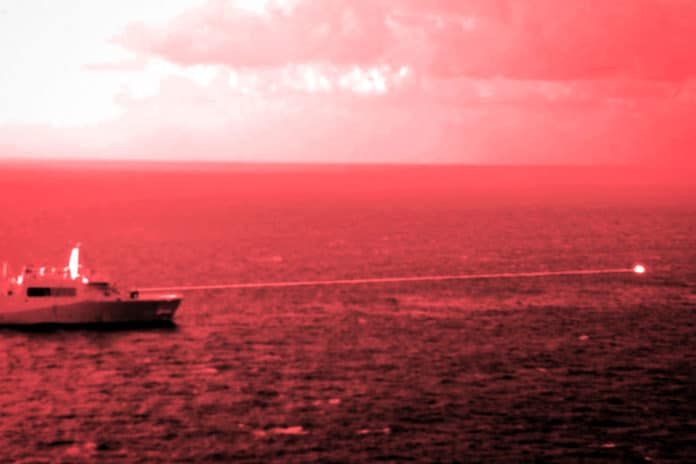The U.S. Navy has successfully tested a high-energy laser weapon system earlier this week in the Gulf of Aden, the body of water separating East Africa from the Arabian Peninsula.
During the demonstration, the Solid-State Laser – Technology Maturation Laser Weapons System Demonstrator (LWSD) Mark 2 MOD 0 aboard the USS Portland, an amphibious transport dock ship, successfully engaged a static surface training target. The service is testing whether mounted lasers can defend ships from small boats and even unmanned vessels.
Portland previously tested the LWSD in May 2020, when it successfully disabled a small unmanned aerial system while operating in the Pacific Ocean.
In 2018, the Office of the Naval Research selected Portland to host the laser weapon technology. The LWSD is considered a next-generation follow-on to the Laser Weapon System (LaWS) that afloat forward staging base USS Ponce tested for three years while operating in the Middle East.
Vessels in the Gulf of Aden are under threat from not just manned watercraft but also unmanned systems, such as the drone boats packed with explosives used by rebel forces in Yemen. These boats are moving closer to their intended targets before being blown up.
The region’s geography, climate, and strategic importance offer a unique environment for technology innovation. U.S. 5th Fleet’s area of operations includes the world’s largest standing maritime partnership, Arabian Gulf, Red Sea, Gulf of Aden, Gulf of Oman, and parts of the Indian Ocean.
